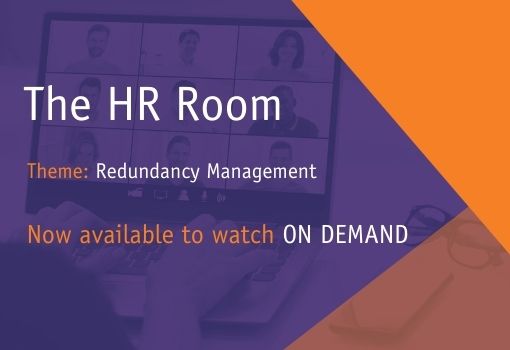Throughout the entire process, there is also the fear of making a mistake hanging over management. Not only does fair procedure need to be followed, but such matters need to be handled with a huge amount of sensitivity and tact. Redundancy is complex and people’s livelihoods are about to be disrupted. Departing employees may well believe the selection process and subsequent dismissal to be unfair. And then there are the remaining employees, who may begin to lose confidence in management. They will be witness to how the redundancy is being handled and it is crucial that they do not have any cause to believe that employees are being treated unfairly, or you could risk losing them too.
With so many factors needing consideration, how can you be sure that you are implementing a fair redundancy process?
Is the reason genuine?
There are a number of reasons why you might be considering redundancies. This could be down to the financial circumstances of your business, the fact that there is no need for certain job functions and roles, reorganisation or closure of the business, or for any of the myriad of reasons that Covid-19 has brought with it.
In order to remain compliant with employment law, The Redundancy Payments Act 1967-2014 outlines the circumstances in which an employee will be considered to have been made redundant;
(a) the fact that his employer has ceased, or intends to cease, to carry on the business for the purposes of which the employee was employed by him, or has ceased or intends to cease, to carry on that business in the place where the employee was so employed, or
(b) the fact that the requirements of that business for employees to carry out work of a particular kind in the place where he was so employed have ceased or diminished or are expected to cease or diminish, or
(c) the fact that his employer has decided to carry on the business with fewer or no employees, whether by requiring the work for which the employee had been employed (or had been doing before his dismissal) to be done by other employees or otherwise, or
(d) the fact that his employer has decided that the work for which the employee had been employed (or had been doing before his dismissal) should henceforward be done in a different manner for which the employee is not sufficiently qualified or trained, or
(e) the fact that his employer has decided that the work for which the employee had been employed (or had been doing before his dismissal) should henceforward be done by a person who is also capable of doing other work for which the employee is not sufficiently qualified or trained
If your reason for making an employee or employees redundant does not meet one or more of these criteria, then your employee may well be able to argue that their dismissal was unfair.
Types of redundancy
There are two main types of redundancy, collective and non-collective. The characteristics of these are based on a threshold number of employees being made redundant over a specific period of time. Anything under the threshold is considered non-collective. Anything over the threshold is considered collective and requires certain additional actions from a business in order to remain compliant.
Those thresholds are:
- 5 employees where 21-49 are employed
- 10 employees where 50-99 are employed
- 10% of the employees where 100-299 are employed
- 30 employees where 300 or more are employed
It is important to note that the above thresholds apply even where the redundancies are voluntary (where you have asked employees to come forward, so that you do not need to choose them, usually incentivised through an attractive redundancy package).
If you think your redundancy may fall into the ‘collective’ category, then find out what you need to do in our latest blog.
Selecting employees for redundancy
Another area that you must consider is how you are selecting your employees for redundancy. You must be able to defend your selection should the matter ever find itself in the WRC.
There are a number of common methods of selection that, when implemented properly, can help you to execute a fair process. These are;
- The usual practice that your business has conducted in the past when it comes to making redundancies
- Last In, First Out (LIFO), which means those with the shortest duration of service. If using this method of selection then we advise exercising caution, or it could lead to equality claims
- An interview process, where employees will be assessed according to their suitability for a role. This is often deployed when a company is making changes to its structure
- A selection matrix, whereby employees are assessed for redundancy based on objective and fair pre-determined criteria
You can deploy more than one selection process during the same redundancy process if you can objectively justify why you are using different selection methods in different departments. Of course, no matter which selection process, or combination of selection processes, you deploy, you must ensure that you give each method careful consideration. Just using one of the above isn’t enough, you need to actually prove the fairness of the method. You can read more about the selection processes here.
Conclusion
While the above information is useful, it would be impossible to detail the many varied complications that can arise when you implement a redundancy process. If you are uncertain of your business’s ability to carry out a fair redundancy process that will not leave you open to claims of unfair dismissal, then you may wish to engage a competent and qualified third-party to manage it.
At Insight HR we are experts in employment law compliance and regularly manage and carry out complex redundancy processes. Get in touch today for a free, no-obligation consultation!



